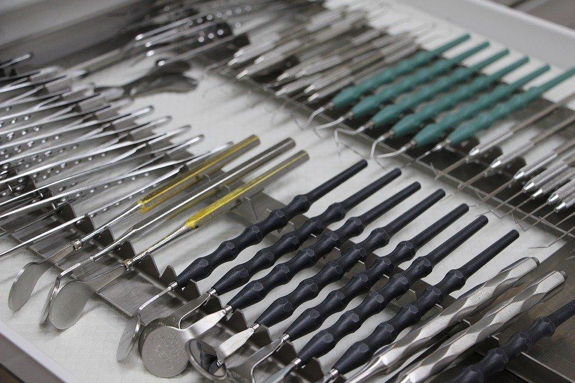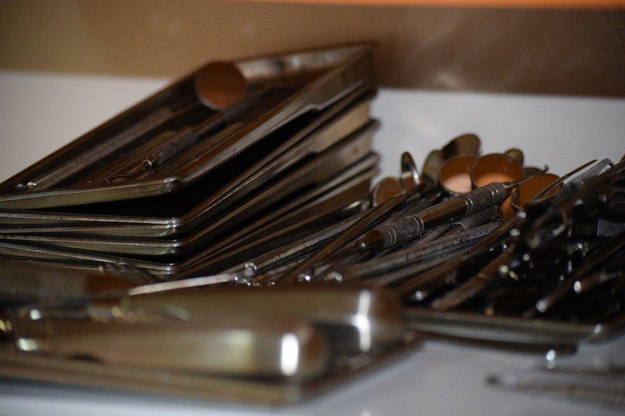What are the tools used during root canals? Root Canals are one of the most common dental procedures that patients visit dentists and endodontists for. Endodontists specialize in performing root canals, allowing them to do so in more detail. Endodontists use a variety of efficient root canal tools, allowing them to carry out the procedure successfully.
These tools require a lot of technique, which makes endodontics a specialized field in dentistry. If you plan to go for a root canal soon, it’s best to know that the procedure will require using the right root canal tools. Mentioned below are some of the root canal tools that endodontists use for the procedure.

(Source)
List of Tools Used During a Root Canal Procedure
Files and Reamers
Files and reamers are thin long drill bits that come in different sizes, mainly to open and stretch the canal and insert the other tool to carry out the procedure. When using each of these tools, endodontists use files and reamers according to their size. They start from the smallest one before moving towards the biggest.
Endodontic Burs
Endodontic burs are one of the first root canal tools to be used for the procedure. They create an opening towards the affected part of your tooth so the endodontist can access the canal. It is more like making an entryway to the canals. Just like files and reamers, endodontic burs come in various shapes and sizes. They choose tools for the procedure according to the type of tooth and dental procedure.
Barbed Broach
The Barbed Broach comes in a thin screwdriver-like appearance, and the purpose of this instrument is to remove dead tissue from the affected tooth. The endodontist does this by inserting the Barbed Broach into the tissue so that it is able to grab the remaining tissue once they remove the tool. This is one of the only root canal tools to help eliminate and remove a sufficient quantity of infected tissue.
Gates-Glidden Drills
The Gates-Glidden drills are another effective root canal tool that allows the endodontist to dig in and open the root canal further in case of an infection buried in the molars. These tools are also useful for root canal retreatment to get rid of putty-like material gutta-percha, which is also buried in the tooth.
Root Canal Explorers
Root canal explorers are small pointed dental instruments with a stainless steel handle. This tool allows the endodontist to look further into the infected tooth once the burs open it properly. This way, the endodontist looks for orfices. Root canal explorers also have other functions and are very useful for getting rid of calcified plaque growing in the mouth.
Excavators
Excavators are sharp long root canal tools that help remove any residing tissue buried in the inner portion of the tooth. This instrument is somewhat similar to a root canal explorer, but it is sharper and longer in size. This tool allows the endodontist to remove decent amounts of tissue from the tooth.
Peso Reamer
Peso Reamers are small, thin, and pointy dental tools that remove the gutta-percha during the root canal re-treatment procedure.

(Source)
Root Canal Procedure Guide
The endodontist uses several of the root canal tools mentioned above step-by-step. They switch between them based on which step of the treatment they’re performing. Mentioned below is a brief root canal procedure that will give you insight into what to expect during one.
- The endodontist will first keep the patient under local anesthesia to initiate a numbing effect on the mouth so the patient won’t feel any pain.
- Next, the endodontist will place a dental dam over your teeth to protect the rest of your mouth. The treatment will take place through the hole in the dental dam.
- Drilling takes place from behind the tooth to allow access to the pulp chamber and root canals
- Removal of the pulp tissue takes place using a Barbed Broach
- The endodontist will now disinfect the canals using antibacterial solutions
- Using the right set of root canal tools, the endodontist will carry out root canal fillings and sealers.
- Using a sealer, the gutta-percha fills the canal space and then sealed to prevent an infection in the tooth.
- Finally, the endodontist removes the dental dam and applies a temporary or permanent filling
Tools Used During Root Canals: Final Words
The root canal tools mentioned above may look frightening, especially after you find out what it does inside your mouth. Even though these instruments feel daunting, you have nothing to worry about if you receive treatment from the right endodontists. Endodontists receive specialized training for much of their career so they can use these complex tools successfully and restore the infected tooth.
For the best endodontic treatment, get in touch with Bryant Park Endodontics.

[…] Tools Used During Root Canals […]